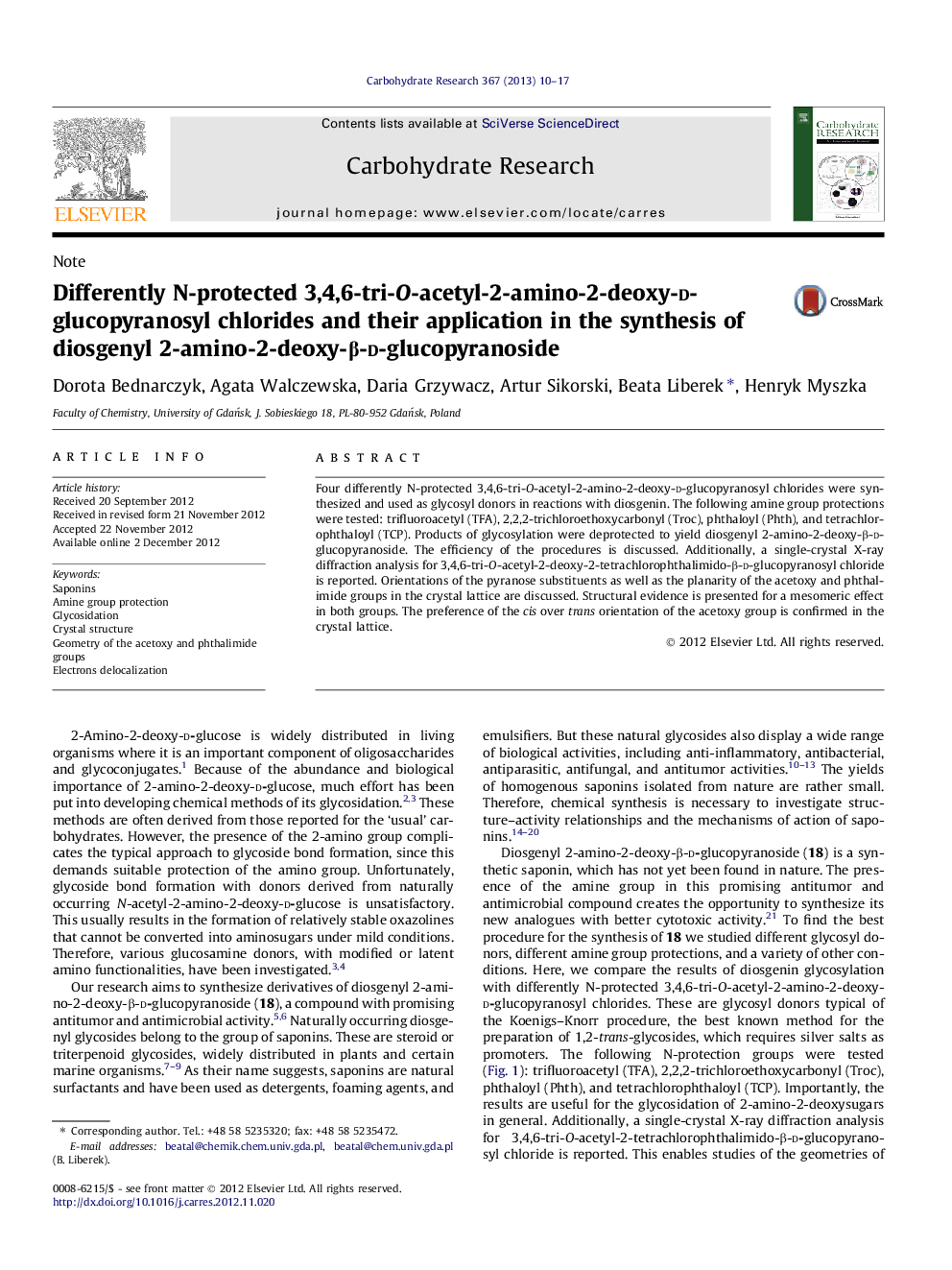| Article ID | Journal | Published Year | Pages | File Type |
|---|---|---|---|---|
| 1383888 | Carbohydrate Research | 2013 | 8 Pages |
Four differently N-protected 3,4,6-tri-O-acetyl-2-amino-2-deoxy-d-glucopyranosyl chlorides were synthesized and used as glycosyl donors in reactions with diosgenin. The following amine group protections were tested: trifluoroacetyl (TFA), 2,2,2-trichloroethoxycarbonyl (Troc), phthaloyl (Phth), and tetrachlorophthaloyl (TCP). Products of glycosylation were deprotected to yield diosgenyl 2-amino-2-deoxy-β-d-glucopyranoside. The efficiency of the procedures is discussed. Additionally, a single-crystal X-ray diffraction analysis for 3,4,6-tri-O-acetyl-2-deoxy-2-tetrachlorophthalimido-β-d-glucopyranosyl chloride is reported. Orientations of the pyranose substituents as well as the planarity of the acetoxy and phthalimide groups in the crystal lattice are discussed. Structural evidence is presented for a mesomeric effect in both groups. The preference of the cis over trans orientation of the acetoxy group is confirmed in the crystal lattice.
Graphical abstractFigure optionsDownload full-size imageDownload as PowerPoint slideHighlights► Differently N-protected 3,4,6-tri-O-acetyl-2-amino-2-deoxy-d-glucopyranosyl chlorides were synthesized. ► Efficiency of the diosgenin glycosylation with synthesized chlorides is discussed. ► X-ray diffraction analysis for 3,4,6-tri-O-acetyl-2-deoxy-2-NTCP-β-d-glucopyranosyl chloride is reported. ► Geometry of the pyranose substituents in the crystal lattice is discussed. ► The evidence for a mesomeric effect is presented.
